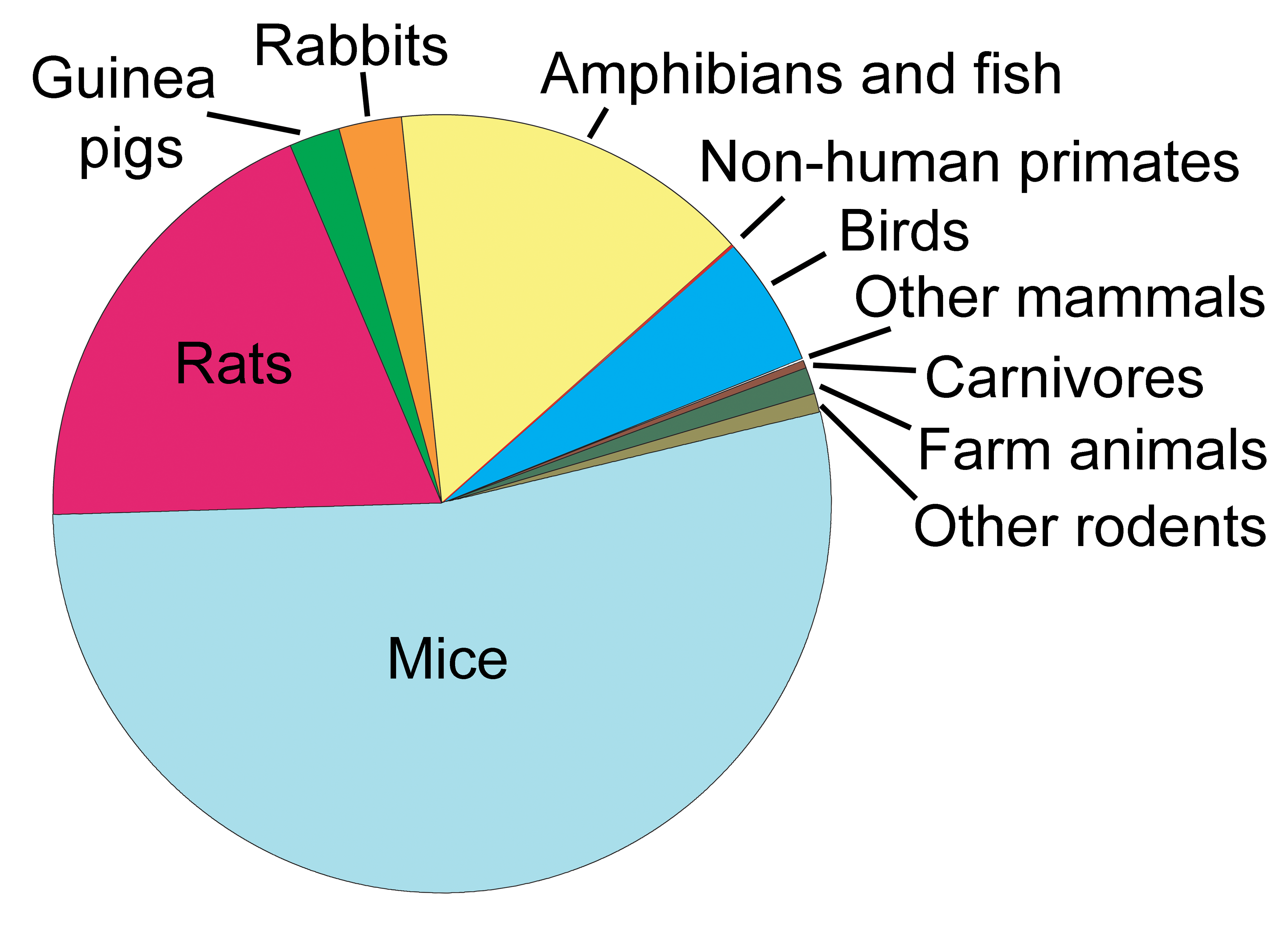1.) What does ‘alternatives to animal testing’ actually mean?
Alternatives to animal testing can be subdivided into three classifications, also known as ‘the 3 R’s’, which include: replacement, reduction and refinement. Replacement testing either does not involve animals at all, which is known as absolute replacement, or there are studies where only the tissues of animals in a petri dish are used, known as relative replacement.
Reduction alternative testing can be defined as reducing the number of animals used in research. Lastly, refinement alternative testing involves minimizing the pain and suffering endured by the animals used in testing.
2.) What are some examples of the alternatives to animal testing?
There are many alternatives that we see advertised in our daily lives that at one point involved animal testing. For example, pregnancy tests used to involve killing a rabbit in order to know a woman’s pregnancy status. Now the replacement alternative is a small kit available at any drugstore or pharmacy.
Technology is a huge factor that can ultimately change the world of animal testing. Computer modeling devices can replace many forms of animal use whether it be in the classroom or the laboratory. Other types of replacement models can also be used such as manikins or plastic replicas.
Another replacement alternative on the rise is the use of in vitro human skin. Instead of testing chemical products on the skin of animals, we can now use a more accurate method involving synthetic skin cells grown from a human donor.
Other alternatives that reduce the number of animals used involves “sharing research animals”. For example if one animal was used for an experiment and ends up passing away, we can still harvest their organs for other purposes in order to save another animal of a similar fate.
3.) What types of animals are typically used for research purposes?
Rodents including: rats, mice, guinea pigs, rabbits, hamsters make up the majority. Also dogs, cats, amphibians, fish, birds, non-human primates and more.

4.) What are the advantages of animal testing?
In the past when technology was not an option, animal testing has led to countless medical discoveries such as chemotherapies like vaccines, organ transplantation and more. Studies have also led to perfecting surgical techniques, as well as a better understanding of other pathologies (such as Alzheimer’s Disease, ASL, diabetes, cancers and many more).
5.) What are the disadvantages of animal testing?
Along with the cruelty inflicted on innocent creatures, there are numerous disadvantages that have recently come to light through modern technologies. One drawback of animal testing is that an animal’s anatomy differs from that of humans. Therefore we cannot always rely on the results observed because the outcome may be completely different when presented to the human body. Another hindrance of animal testing is that it can be very time consuming and costly. With modern technology, multiple tests can be done at once. This cuts down the cost and time needed to obtain results.
6.) How do laboratories obtain these animals in the first place?
Many of the animals used for research and educational purposes are bred for that sole purpose. This includes rodents, dogs, primates etc. There are many standards that must be met by the U.S. Department of Agriculture and the Animal Welfare Act in order to breed these animals. These laws and restrictions require both money and time provided by breeding corporations to hoard these animals. Consequently, they are not always carried out properly.
Sometimes animals are obtained from pounds, but there are very strict guidelines that must be followed and therefore it is not always an option. Animals are put down in shelters everyday when they are not claimed, while other animals are bred for the sole purpose of enduring pain. It is unfortunate that this red tape causes so many lives to be wasted.

References
http://altweb.jhsph.edu/resources/faqs.html
https://upload.wikimedia.org/wikipedia/commons/e/e3/Types_of_vertebrates_v2en.html
http://www.animalexperimentspictures.com/images
http://www.sciencemediacentre.co.nz/2012/12/07/ending-animal-testing-in-nz/
Hello Sam,
I thought these were some really interesting questions that you had in your blog that I never had ever thought about! Since technology is such a huge factor that can change animal testing, do you think that animal testing can ever be eternally eliminated? Since technology seems to be ever-lasting and they are always developing, I honestly hope animal test becomes forbidden. I really thought your answers were very informative! Good job Sam!
LikeLike
Great Q and A post Sam! I really enjoyed reading that. the last question was kind of shocking for me. I did not know that those animals were bread only for experimenting on them, or as you put it, for “pain”. great post, thank you.
LikeLike
Very informative FAQ’s about your subject. it sums up pretty much what you have been blogging about. Furthermore, I think that the last question is the most important one. it shows the cruel way of treating animals and keeping them in bad condition. Great post!
LikeLike